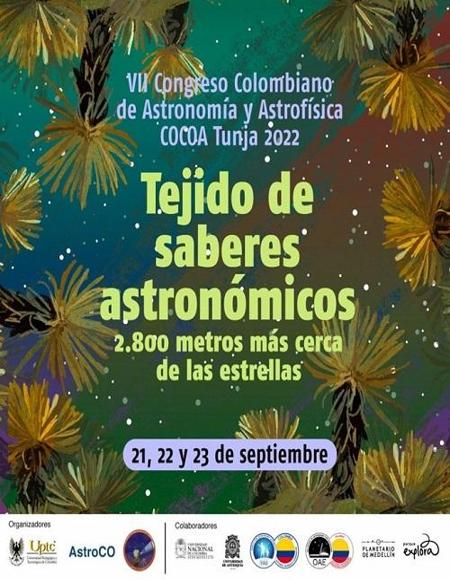Asteroid Dynamics as a tool for teaching Physics and Astronomy

Abstract
This article presents the results of the construction and implementation of a sequence of teaching learning methodology taking on mind the Kepler’s laws, their relationship with Newton’s laws and their respective application in the classical description of the movement of asteroids in the Solar System. Is also linked the citizen science project for the asteroid identification of the international collaboration - IASC, with the intention to provide a context on the importance of the identification of asteroids in the Solar System. The implementation have been done with High School students from the club of astronomy of a district educational institution in the city of Bogotá. It is evident that the proposed activities contributed to a better understanding of the topics addressed in the classroom, and some of the difficulties that persist in the group are identified and that are tools to redesign the proposed lerning sequence.
Keywords
Asteroids, Planetary movement, Asteroids search, Teaching-learning sequence.
References
- D. B. Aissa, “The importance of the study and observation of stellar occultation by Near-Earth Asteroids,” in Annual Conference and General Assembly of the African Astronomical
- Society, 2022, p. 56.
- CNEOS. (2022) Center for near earth object studies. [Online]. Available: https://cneos.jpl.nasa.gov/stats/totals.html
- E. S. Agency. (2022) European space agency. [Online]. Available: https://neo.ssa.esa.int/risk-list
- CNEOS. (2022) Center for near earth object studies. [Online]. Available: https://cneos.jpl.nasa.gov/stats/
- NASA. (2022) Planetary defense. [Online]. Available: https://www.nasa.gov/planetarydefense/neoo
- A. Torralba, “La ciencia ciudadana como innovación en la enseñanza de las ciencias,” X I I JORNADAS DE INNOVACIÓN DOCENTE 2019 – Libro de Actas UNIVERSIDAD DE
- OVIEDO, 2019.
- L. L. Jenkins, “Using citizen science beyond teaching science content: A strategy for making science relevant to students’ lives,” Cultural Studies of Science Education, vol. 6, DOI: https://doi.org/10.1007/s11422-010-9304-4
- no. 2, pp. 501–508, 2011.
- D. Lopera, “Diseño de una estrategia didáctica para la enseñanza aprendizaje del movimiento planetario con la utilización de un aula virtual,” Maestría en Enseñanza de las
- Ciencias Exactas yNaturales, pp. 9–11, 2014.
- J. Guisasola, K. Zuza, J. Ametller, and J. Gutierrez- Berraondo, “Evaluating and redesigning teaching learning sequences at the introductory physics level,” Physical Review Physics Education Research, vol. 13, no. 2, p. 020139, 2017. DOI: https://doi.org/10.1103/PhysRevPhysEducRes.13.020139
- H.D. Curtis, OrbitalMechanics forEngineering Students. ELSEVIER,
- , vol. Second Edition.
- P. G. Hewitt, Física conceptual. PEARSON Addison Wesley, 2007, vol. Décima edición. [Online]. Available: https://ccie.com.mx/wp-content/uploads/2020/03/f isic
- a-conceptual_paulhewitt.pdf
- MEN, “Estándares básicos de competencias en ciencias sociales y ciencias naturales,” Ministerio de Educación Nacional, pp. 40–52, 2020. [Online]. Available: https:
- //www.mineducacion.gov.co/1780/articles-116042_archivo_pdf3.pdf
- MEN, “lineamientos curriculares,”Ministerio de Educación Nacional, pp. 81–83, 2018. [Online]. Available: https://www.mineducacion.gov.co/1780/articles-339975_recu
- rso_5.pdf
- A. López, “La simulación: una herramienta para el aprendizaje de los conceptos físicos,” Maestría en Educación Matemática-Universidad deMedellín, pp. 36–39, 2016.
- C. Morales, D. Marín, and M. León, “Asrtronodinámica para todos primera parte python como herramienta clave de aprendizaje en ciencia,” Astronomía, pp. 40–44, 2020.
- E. Gesteira Losada, I. Larrosa Cañestro, E. de la Torre Fernández,
- and F. ZacaríasMaceiras, “Cónicas del espacio al plano usando geogebra 3d,” Asociación Galega do Profesorado de EducaciónMatemática, 2015. [Online]. Available: https:// smpm.es/moodle/pluginf ile.php/1350/mod_resource/content/0/Conicas_del_espacio_al_plano_con_GG3D.pdff
- D. Ramírez and R. Reyes, “Propuesta de enseñanza de la primera ley de kepler a partir de los elementos de la elipse,” Revista Tecné, Episteme y Didaxis: TED., 2016.
- [Online]. Available: https://revistas.pedagogica.edu.co/index.php/TED/article/view/4671/3827
